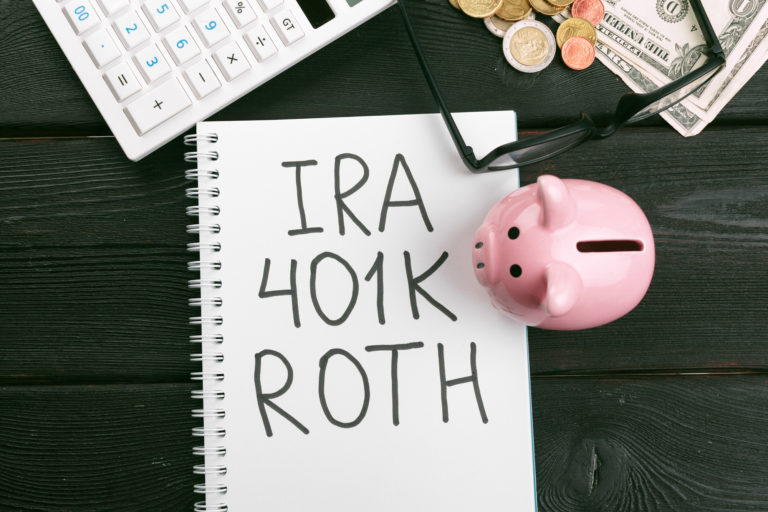Multiple IRAs are permissible, but are they a bright idea? The following are the advantages and disadvantages.
How many IRAs can you have? How many Roth IRAs?
There is no limit on the number of IRAs an individual may own. You can even own multiple IRAs of the same type, such as Roth IRAs, SEP IRAs, and regular IRAs.
Increasing the number of IRAs does not inevitably increase the annual contribution limit.
That is $6,000 for Roth IRAs and $7,000 for regular IRAs 2020 and 2021 ($7,000 if age 50 or older).
You may distribute that money among IRA kinds in any given year if you like. (Contribution limitations do not apply if you are rolling over an IRA from a previous employer’s retirement plan, such as a 401(k), to an individual account.)
The benefits of having multiple IRAs
Having multiple IRAs can assist you in fine-tuning your tax approach and provide you with greater investment options and account insurance. The following are some of the advantages of having several IRAs:
Diversification of tax benefits: Different forms of IRAs offer varying tax benefits. A typical IRA provides an immediate tax deduction, which allows you to defer paying taxes until you begin withdrawing funds from the account in retirement. There is no tax deduction on contributions to a Roth IRA, but eligible withdrawals are entirely tax-free. Here’s an in-depth look at the differences between traditional and Roth IRAs.
Diversification of investments: Having IRAs at numerous financial institutions exposes you to various sorts of investments and even investing strategies. For instance, suppose you want most of your retirement assets professionally managed but still want to invest in specific equities on your own. You might open one IRA with a Robo-advisor (for low-cost, automated portfolio management) and another with a discount brokerage that also offers stock trading — or you could open two separate accounts with the same firm if it provides both services. Compare some of the greatest IRA providers with our overview of the greatest IRA providers.
Apart from the tax treatment of deposits, regular and Roth IRAs have distinct withdrawal regulations before and after retirement. Roth IRA contributions (but not earnings) may be withdrawn tax- and penalty-free and for any reason at any time. Traditional IRAs offer limited flexibility; however, they do provide penalty-free early withdrawals (before age 5912) in certain circumstances. And, unlike the Roth, distributions from a traditional IRA become required once the account holder reaches the age of 72. There are no minimum withdrawal requirements with the Roth.
Additional insurance coverage for your cash and investments: If the brokerage or bank that holds your IRA collapses, SIPC and FDIC insurance for investment and deposit accounts may reimburse your losses. While coverage is usually limited to $500,000 (SIPC) or $250,000 (FDIC) per account holder at a single institution, there are options to expand your coverage through several accounts. For instance, if you have two Roth IRAs at the same SIPC-insured institution, you are only eligible for coverage up to $500,000. However, if you have both a Roth and a regular IRA with the same institution, each account is considered a separate covered entity with SIPC coverage of up to $500,000.
Estate planning made simple: Beneficiaries are selected as part of the process of opening an IRA. While you can name more than one beneficiary per IRA (primary and contingent), having particular beneficiaries on separate accounts can help avoid beneficiary squabbles when you pass on to the great beyond.
The drawbacks of multiple IRAs
What is the primary disadvantage of having several IRAs? The inconvenience factor. Listed below are a few disadvantages:
Increase the paperwork by doubling (or quintupling) it: Red tape comes with the territory of retirement accounts. While tracking and managing your money online is easier than ever, having numerous accounts entails dealing with various tax forms, notices of service changes/updates, privacy rules, and other disclosures.
Retirement planning and portfolio management have become more complicated: Asset allocation, or the art of balancing risk and reward in your portfolio, is a critical component of retirement planning. When your assets are scattered across many accounts, it becomes more complicated to monitor performance and rebalance the entire mix to maintain a coherent investing strategy.
Exposure to additional account and investment fees: It’s normal to prioritize higher-balance accounts and leave the smaller ones alone. However, neglecting to care for and maintain a retirement savings account might result in mediocre investment results, particularly when it comes to investment expenses — which can range from brokerage fees to mutual fund sales charges — which gradually erode your earning capacity.
What’s the correct number of IRAs?
For the vast majority of people, the answer is at least two: Roth and regular IRAs, as well as an employer-sponsored retirement plan, such as a 401(k), if you have one. This is why:
- Roth IRAs offer the most significant degree of freedom both before and during retirement (tax- and penalty-free withdrawals of contributions) and during retirement (tax-free distributions and no required minimum withdrawals). If you are eligible to contribute to a Roth IRA, it is definitely worth your while to do so. The following table summarizes the current Roth contribution restrictions.
- A traditional IRA is a wise investment if you have money from previous employer-sponsored retirement plans or if the upfront tax reduction encourages you to save more. In comparison to your previous 401(k), you’ll likely have more investment selections and greater control over fees (k). Additionally, rolling money from a plan funded with pretax monies into a standard IRA, which treats taxes the same way, eliminates the possibility of receiving a surprise tax charge from the IRS. For step-by-step instructions, refer to this 401(k) rollover tutorial.




